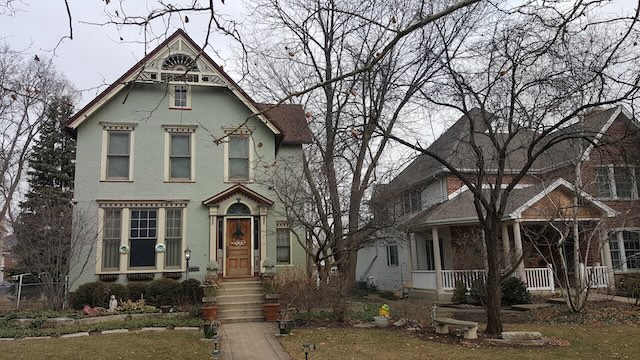The Value of Single-Family Neighborhoods
by Randall O’Toole, The Antiplanner, October 31, 2024
The YIMBY movement argues that people who oppose densification of their single-family neighborhoods are racist. But race has nothing to do with it. A new paper by Wharton economist Joseph Gyourko and Brown University economist Sean McCulloch finds that a 1/2-unit per acre increase in density imposes a loss of $9,500 per home in single-family neighborhoods. Moreover, the loss is significantly larger if the increase density is in the form of multifamily housing or rental housing.

What Gyourko and McCulloch really found is that people are willing to pay more to live in low-density neighborhoods, and their willingness to pay for a home drops when the neighborhood is densified. This means densification is effectively a taking of private property, which the Fifth Amendment to the U.S. Constitution suggests should require compensation.
Gyourko and McCulloch conclude that such compensation would be extremely expensive. They also note that it would be regressive because the wealthiest people are the ones who tend to live in the lowest-density neighborhoods and thus would demand the most compensation. But it isn’t just rich people, they say: “Most people do not like [densification], and some are extremely harmed by it.”
Density advocates ignore the idea of compensation. They seem to believe it is their right to impose density on anyone they wish. Of course, they tend to do so on the least powerful.
First, they start by proposing to rezone neighborhoods to allow for accessory dwelling units (ADUs). In Portland, residents strongly protested, so the densifiers persuaded the state legislature to mandate that all single-family zoning codes be rewritten to allow ADUs. They often argued that people could use ADUs to house and care for their aging parents, but that wasn’t their real goal. They simply wanted more density. They try to make it sound like people would add a bedroom above their garage or some other innocuous change, but homeowners in a San Diego neighborhood of single-level homes find their neighbors are building two-story houses in their backyards.
That’s an accessory dwelling unit? Most homeowners in single-family neighborhoods would be outraged if they understood that’s what planners meant when they suggested such dwellings.
Of course, a few ADUs aren’t going to add much density, so density advocates then propose four-plexes. When that isn’t enough they propose minimum-density zoning, a requirement that all new construction be at least 80 percent of the maximum density allowed. In Portland, they combined this with rezoning of neighborhoods that had 8 homes per acre to 32 homes per acre. If someone’s house burnt down, they were required to replace it with a four-plex.
Next, they propose to increase height limits to 60 feet. When Portlanders protested against this, the densifiers “compromised” by increasing height limits to 45 feet, which allowed for five-story buildings. By an amazing coincidence, the dozens of neighborhoods that were so densified were nearly all working-class neighborhoods. Not a single upper-middle-class neighborhood was densified.
Some homeowners in California are fighting back by seeking to put a state constitutional amendment on the ballot that would take away the state’s power to mandate densification of local neighborhoods. I hope they are successful.
Densification is completely unnecessary. The 2020 census classified 95.0 percent of California as “rural.” Many counties, particularly around major urban areas such as San Francisco and Los Angeles, have placed these lands, which are mostly private, off limits to urban development. The census also found that 98.9 percent of Oregon, 96.5 percent of Washington, and 95.3 percent of Hawaii are rural, yet all of these states have high-priced housing thanks to state laws that have placed most of this rural land off-limits to development.
These state laws, and similar local regulation in Colorado and other states, are ignored by densification advocates. The Mercatus Center, which was once a free-market group, recently released a paper on what the federal government can do to make housing more affordable. One suggestion is that federal housing grants should be “targeted” to communities that do things like raise height limits, build transit-oriented developments, and other wise promote density.
The paper does suggest that the federal government should “release locked-in land.” But by that the authors mean the federal government should promote more density within existing urban areas, not encourage states and regions to relax rural land-use restrictions. The paper specifically targets communities that have protective covenants prohibiting densification by limiting federal mortgage loans in such communities.
In other words, Mercatus and other YIMBYs want to impose density on urban neighborhoods that don’t want it while they ignore rules that prohibit low-density development of rural lands whose owners would be happy to develop it. That’s not supporting the free market.
If there really is a pent-up demand for high-density housing, which I doubt, then such density can be built at the urban fringes along with more typical low-density suburban developments after rural land-use restrictions are abolished. If there is little demand for new high-density developments, then supposed free-market groups such as the Mercatus Center shouldn’t be promoting densification.